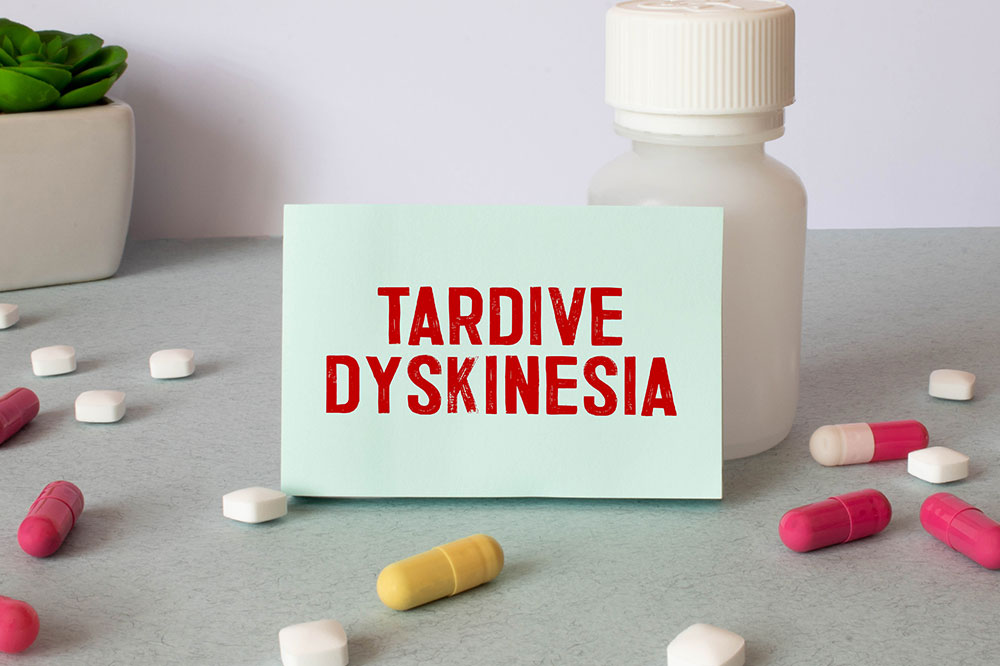Tardive Dyskinesia – Symptoms, Complications, and Management Options

Tardive dyskinesia (TD) is a movement disorder that usually arises as a side effect of treatments for mental health issues. It occurs when these treatments obstruct dopamine receptors in the brain, a chemical known to assist in controlling emotions, pleasure, and movement. Patients may manifest involuntary movements along the jaw, face, lips, and tongue. However, not everyone using these treatments develop tardive dyskinesia, and the symptoms can be controlled by reducing the dosage.
Symptoms that help identify tardive dyskinesia
Those with this disorder are known to have involuntary facial expressions and body movements. This includes chewing motions, sucking motions, lip smacking, sticking out the tongue, rapid blinking of eyes, walking in the pattern of a duck, rocking the pelvis area, and making continual finger movements. The signs might be mild initially but can become more evident later as the condition progresses. Patients may experience flare-ups and more intense movements when stressed.
Other discomforts patients may experience
Besides the symptoms mentioned, one may develop other problems as a result of the condition, such as breathing difficulty, difficulty swallowing food, dental issues, difficulty speaking, and irreversible changes along the face like drooping mouths or eyelids. These discomforts can interfere with the patient’s routine activities and affect their quality of life and work.
Complications of the disorder
If left unaddressed, tardive dyskinesia may lead to multiple long-term and short-term issues and complications that can be hard to manage. Two examples include:
Physical disability
The condition affects patients physically and makes undertaking routine activities difficult over time. For instance, it prevents them from controlling their movements while performing activities like driving and operating home appliances. This makes them depend on caretakers or loved ones to complete everyday tasks. As a result, many are forced to leave their jobs.
Mental distress
Since tardive dyskinesia prevents people from controlling their bodies, they feel helpless and angry. The loss of physical control also makes them self-conscious and embarrassed in the social circle, as others noticing their unusual movements may become judgmental or frightened. Consequently, patients try to stay away from people, which leads to relationship problems and, in turn, depression and anxiety.
How to manage tardive dyskinesia
Thankfully, many remedies and treatment options are available to manage the symptoms of this disorder so that it does not affect individuals significantly. However, their effectiveness is not very clear. Here are some tips for managing the condition:
Adjust the dosage of mental disorder treatments
Since tardive dyskinesia is usually caused as a side effect of treatments used for mental disorders, one will have to manage their dosage correctly. Individuals must inform a doctor immediately if they have involuntary movements after using such treatments. The specialist will measure the series of movements to determine whether it is tardive dyskinesia or another problem. Based on the evaluation, they will recommend other treatments with fewer side effects or reduce their dose to keep the condition in control. Patients are advised not to stop any treatment on their own until and unless advised by a specialist. Doing so may worsen the symptoms of tardive dyskinesia and even trigger its development in those not diagnosed with the disease.
Perform muscle-building exercises
Building muscle mass can reduce the symptoms of tardive dyskinesia. Therefore, patients can opt for strength-training exercises using available tools. One can also perform simple physical activities like walking that help stay fit while improving emotional and mental well-being. If confused, individuals can consult an expert to choose exercises depending on their condition.
Try ginkgo biloba extract
This plant’s extract has many healthy properties, making it suitable for treating ailments like allergies, dementia, eye problems, allergies, and tinnitus. It can also relieve the symptoms of tardive dyskinesia. Patients can drink ginkgo biloba tea or purchase natural ginkgo biloba treatments available on the market. However, it is advisable to consult a doctor before doing so.
Make changes to the nutrition plan
Those with this disorder may opt for healthy meals rich in the following nutrients to manage their symptoms:
Melatonin
Melatonin is a hormone produced at night by the pineal gland present in the brain. It helps regulate a person’s sleep-wake cycle and treat problems like insomnia. Further, it acts as a potent antioxidant that accentuates dopamine production through the hypothalamus. Hence, melatonin is effective in preventing and treating tardive dyskinesia. A few foods that can help boost the production of this hormone are tart cherries, goji berries, milk, eggs, fish, and nuts.
Vitamin B6
This vitamin helps with the synthesis of major neurotransmitters like serotonin, noradrenaline, dopamine, and histamine. This leads to a reduction in symptoms relating to anxiety, fatigue, depression, and pain. Some foods rich in vitamin B6 are milk, salmon, tuna, spinach, and sweet potato.
Vitamin E
Vitamin E helps keep the brain, eyes, blood, and skin healthy. It also possesses antioxidant properties that aid in safeguarding the cells against the harmful effects of free radicals. Further, the vitamin may protect against tardive dyskinesia and improve symptoms like disfiguring. The best foods for vitamin E are sunflower seeds, almonds, and hazelnut oil.
Tardive dyskinesia is tough to deal with as it has no specific cause. As mentioned, it mainly develops as a side effect when individuals use particular treatments to manage any mental ailment. However, there might be other reasons, too, like diabetes, old age, prior brain injury, etc. Those with these risk factors should look out for the symptoms and visit a doctor immediately upon experiencing them. People who have been suffering from digestive issues and have been under treatment for a long time also require getting themselves checked for any symptoms of tardive dyskinesia. The earlier the condition is diagnosed, the better it can be managed in the long-term.






